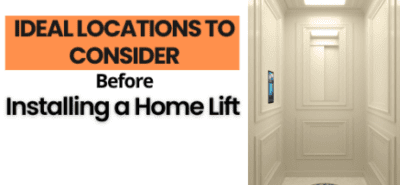What types of home elevators are there? – Part 1
Gantry wire rope traction home elevator
Since the advent of electric-driven elevators in 1889, traction elevators have experienced 130 years of development.
The technology is mature and stable, and the main engine generally adopts permanent magnet synchronous gearless motors,equipped with VVVF control and drive integrated elevator control system to ensure the safety and stability of elevator operation.
The elevator car system adopts the gantry structure, so that the elevator suspension point, elevator center of gravity and guide rail center are basically on the same plane, and it is equipped with a double-layer car bottom with a shock absorption system, so that the elevator operation has excellent comfort sense. The rated power of a traction home elevator with a load of 400 kg is only about 1kw, which is equivalent to the power consumption of a TV.
Traction home elevators are the mainstream product in the current home elevator market, accounting for about 2/3 of the market share, and is the first choice for home elevators.
Steel belt traction home elevator
In 2000, Otis Elevators announced the introduction of the Gen elevator system for the first time using flat steel belt technology instead of steel cables to lift the elevator car. In the later period, Schindler and other companies also launched their own steel belt products, but due to patent protection issues, such steel belt structures have only been introduced to the market in the past few years.
Because this structure has certain advantages in hoistway space. For the same hoistway width, the steel belt structure can increase car size by 5~10cm compared with the traditional ropes, but its maturity is slightly lower than that of the traditional rope structure.
The installation of the belt system requirements are relatively high, the equipment cost and the maintenance cost is relatively slightly higher. With the continuous improvement of this technology, this system has a broad space for development in the future.
Backpack rack traction home elevator
The backpack frame structure home elevator is a traditional home elevator structure.
In the early hydraulic home elevators, most of the traction home elevators adopted this scheme. In the later period, due to the development of small shaft technology and small traction machines, the home elevator with the gantry structure gradually replaced the backpack structure.
The advantage of backpack structure is that only one wall needs to bear the load. This feature can meet the needs of special civil construction, and can easily have 2 door openings on 2 adjacent car walls. Of course, these doors, 90 degree to each other can also adopt a diagonal gantry structure.
The disadvantage of this structure is that it has high requirements for the installation of elevator guide rails, and roller guide shoes are needed. For the high quality requirements of the guide shoe, the lateral force of the guide shoe on the guide rail is large, and the running comfort is not as good as that of the gantry structure. If it is not running for a long time, there will be a sense of unevenness when starting. At present, some manufacturers use customized sliding guide shoes to replace the rolling guide shoes, which are of higher quality and cost.
This lecture is “Types of Home Elevators”
Follow us, House of Elevators, an Australian owned and operated company offering Australia’s most innovative and diverse range of home lifts and residential elevators.



